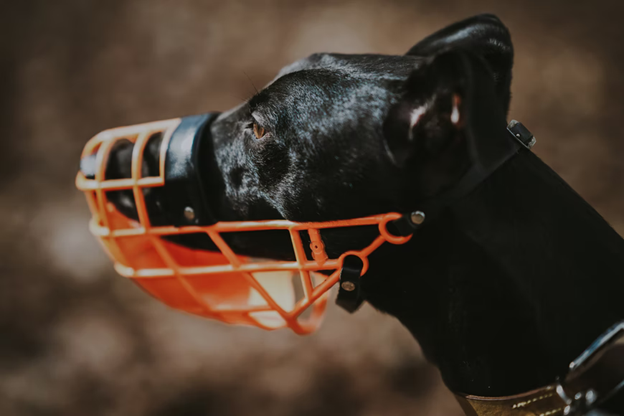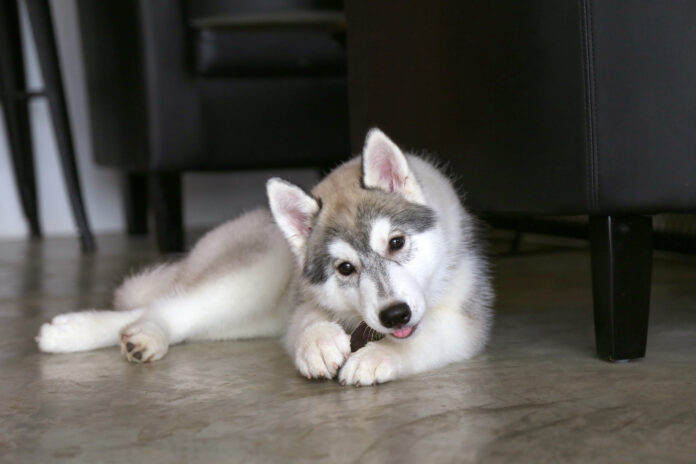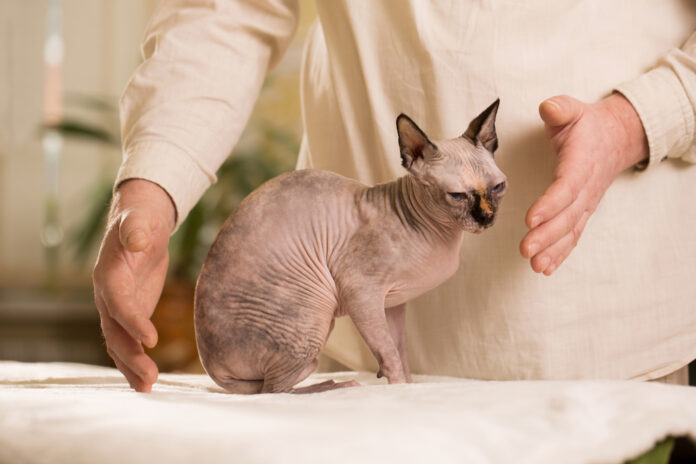“Muzzles are cruel” and other muzzle myths

Are muzzles painful? Are they strictly for aggressive dogs? Let’s debunk a few myths about muzzles and shed some light on the benefits of these tools!
Most trainers and veterinarians agree, there comes a time at least once in every dog’s life where a muzzle may be needed. A muzzle is a training tool that comes in handy in emergencies and helps to promote safety. A muzzle is not, as many people assume, a permanent solution for aggressive dogs. Here are a few myths that have always revolved around the tumultuous subject of muzzles.
Myth #1: Muzzles are cruel
Almost no dog likes when a muzzle is first placed on their face. They may paw at it, back up, and shake their head. The muzzle is not hurting the animal, they simply aren’t accustomed to it yet. With a little training, dogs will become comfortable when wearing their muzzle and will act normally.
Myth #2: Dogs can’t breathe properly when wearing a muzzle
There are two main types of muzzles for dogs — basket muzzles and soft muzzles. A basket muzzle is just that, a basket that fits around the dog’s nose and mouth. In this type of muzzle, they have plenty of room to breathe normally or pant when they become hot or exert a lot of energy. Soft muzzles restrict panting, which is why they should only be used for brief periods, such as during grooming or when getting care from a vet. Soft muzzles are meant to protect people from bites for short stints of time and are typically not used in training.
Myth #3: They can’t eat or drink
Both basket and soft muzzles allow for dogs to drink water and be fed treats. Muzzles are not designed to be used during mealtimes, since they make eating difficult.
Myth #4: All dogs wearing muzzles are aggressive
Dogs are man’s best friend, but they are still animals, and their animal nature runs deep. It is very common for dogs to develop anxiety, leash aggression, possessive reactions, and fear that results in unwanted behaviors like growling, bearing teeth, snapping, and biting. These are common reasons why pet parents use a muzzle as a training tool to help their dogs adopt good behavior. A muzzle may also be needed when a pet becomes injured or ill. A dog that has never shown aggressive behavior may easily snap at caregivers when they are in pain.
Muzzles are also a great way to prevent dogs from eating things they shouldn’t – like garbage and plants. If your dog has pica or develops a habit of feasting on objects that aren’t food, a muzzle may save his life!
Myth #5: If a dog bites, he must be muzzled for life
As mentioned earlier, muzzles are training tools. Just because a dog shows aggressive behavior towards another animal or humans doesn’t mean he can’t be trained. For example, many dogs exhibit alpha or beta personalities. They are either the dominating, pack-leader type or a submissive underdog, so to speak. When introducing two alpha dogs, a fight for dominance can occur and result in injuries to both animals. Basket muzzles are an excellent way to safely introduce dominant dogs and get them used to each other with exposure training. In this example, enough time and training with muzzles should lead to the dogs getting along without having to wear muzzles.
Now that we’ve busted some of the common myths about muzzles, you’ve got an extra tool in your arsenal for helping you train your pup into a well-behaved buddy. Puppies aren’t born behaving perfectly, so it’s up to you as the pet parent to guide them.




